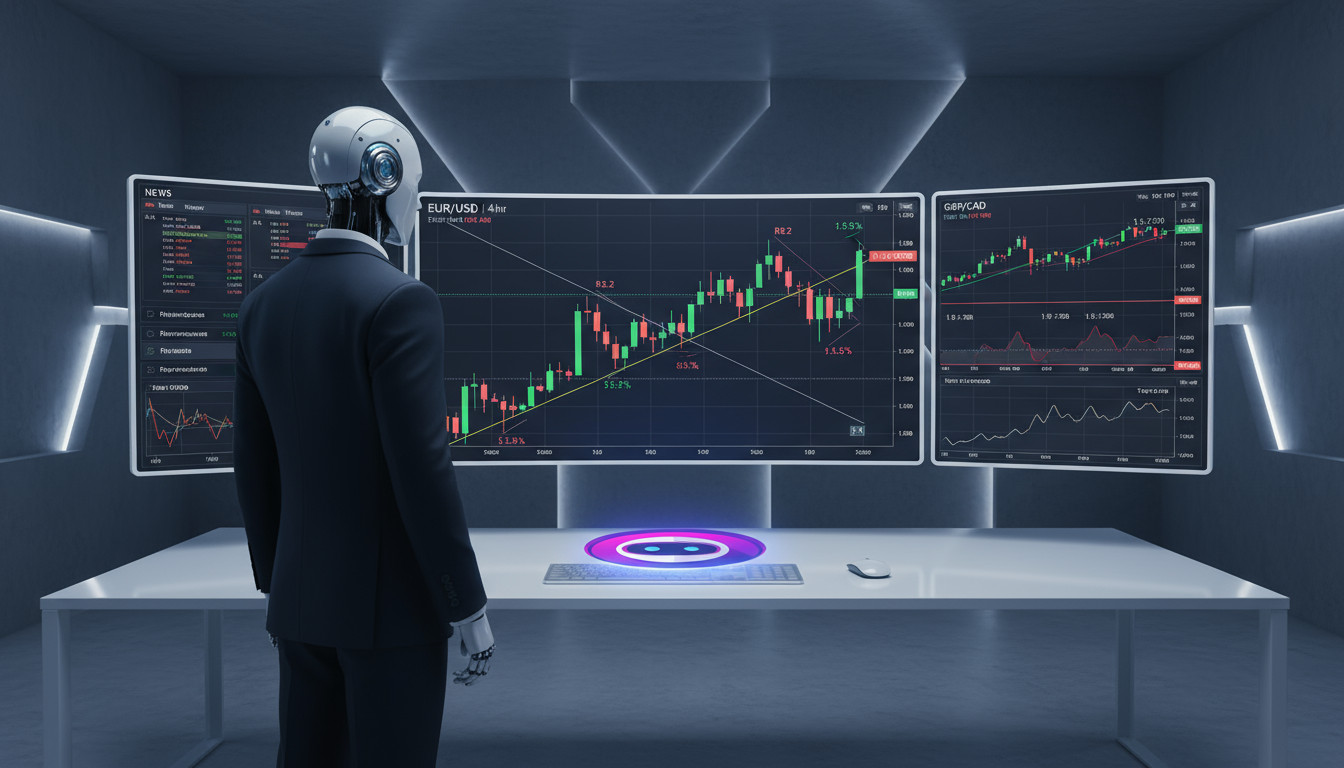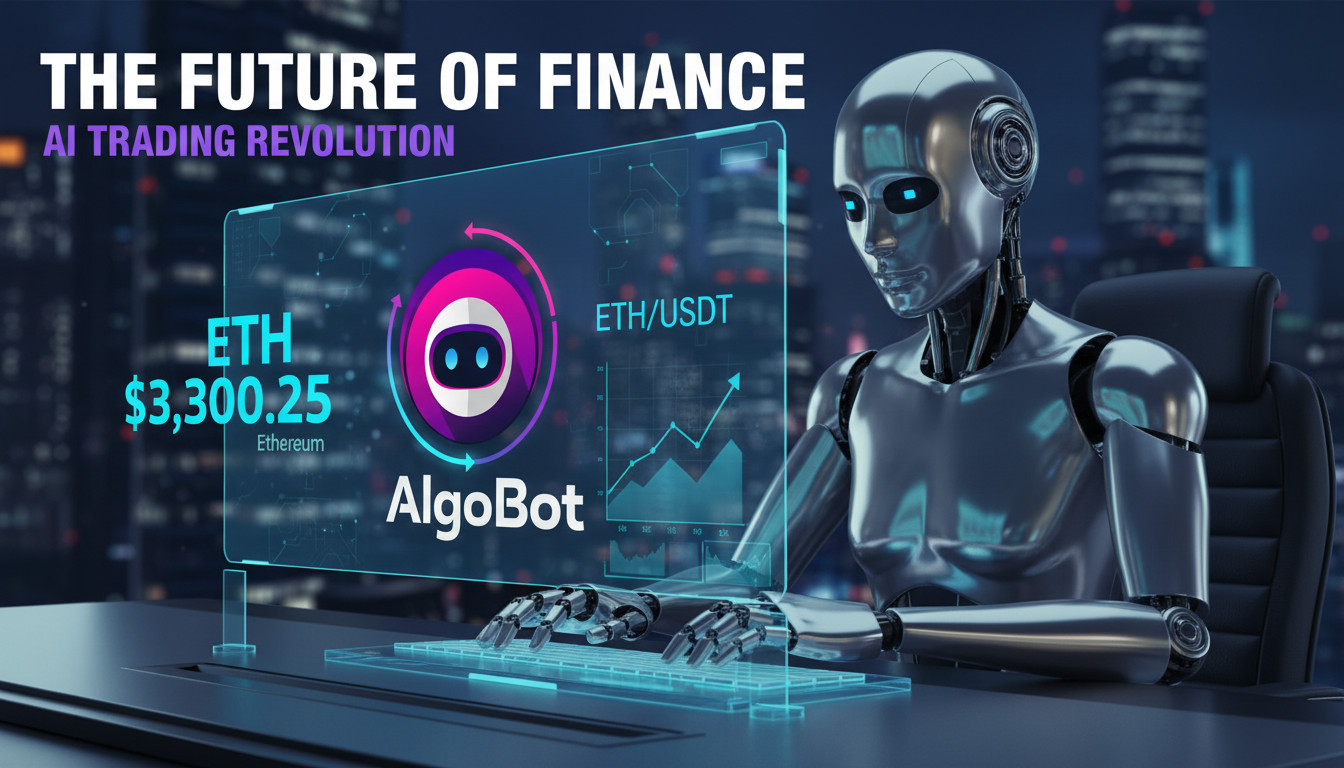In a fast-paced market like crypto futures, timing can make or break your trading strategy. This is why algorithmic trading can be a powerful solution. It captures market shifts in milliseconds and places trades without manual intervention.
This guide explores how to optimize crypto futures trading with algorithms. We dive into the benefits of algorithmic programs and cover the most popular strategies for beginners.
Here are the most important points to know about crypto futures algorithmic trading: The concept of algorithmic trading is simple. Think of it as an automated system that scans the market and handles trades on your behalf. Essentially, it’s like having a high-speed trading assistant that follows a set of programmed rules. Once specific market conditions are met, the system places trades according to those pre-set parameters. What sets algorithmic trading apart is its ability to operate at speeds and frequencies far beyond human capability. This rapid execution is especially valuable for highly volatile markets like crypto futures. Today, there are numerous algo trading bots designed specifically for the futures market. These bots are tailored to navigate the intricacies of crypto price action and trade with leverage. Moreover, they can also manage risk by dynamically calculating position sizes and suitable exit points. Algorithmic bots streamline the trading process by automating critical tasks. Here’s a simplified explanation of how they operate: Some of the best crypto futures trading bots also utilize machine learning algorithms. This feature allows bots to modify orders in real-time in response to market conditions. Now let’s discuss the different types of algorithmic trading tools available for crypto futures. Fully automated algorithmic software handles all facets of crypto futures trading. The key advantage here is the ability to operate 24/7. The algorithm handles complex calculations and makes split-second decisions, which is challenging for manual traders to replicate. Put otherwise, by automating the entire trading process, bots remove the necessity for manual monitoring and decision-making. Moreover, you also benefit from rapid execution and systematic strategy application. Although fully automated, these tools also facilitate customization to a certain degree. For instance, traders can select their risk preference or specify their favorite crypto to trade. Semi-automated trading tools offer a mix of automation and manual control. These systems let traders intervene in the trading process while still profiting from automation. For instance, the algorithm might generate signals based on the built-in parameters. These signals will be sent to users as alerts. Traders can then determine whether to act on these signals. Additionally, some semi-automated tools allow traders to create their own trading strategies. This flexibility offers more control for traders. Are you an experienced futures trader with expertise in programming? If so, you can also build your own algorithmic trading tool. Programming languages like Python, R, C++, and Java are frequently used. You can also find the required data sets on sites like Polygon.io and QuantConnect. To build your algorithmic trading tool, you’ll first need to pick a strategy. After writing the algorithm, it’s vital to test and backtest it. Only then should you connect the tool to your preferred broker via APIs. This means it will begin trading crypto futures with real capital. Algorithmic trading tools can integrate one or more strategies. Here are the most common algorithmic trading strategies used in 2025: In trend following strategies, the algorithm attempts to ride the waves of market movements. More specifically, instead of predicting upcoming movements, the algorithm uses statistical analysis to find trends likely to continue. Once a trend is detected, the algorithm places trades to align with the prevailing direction. Trend following strategies are well-suited for crypto futures algo trading. This is because algorithms strictly follow rules to identify trends. The strategy analyses the momentum and defines support and resistance levels to place trades. Crypto arbitrage bots are also widely used for futures trading. In arbitrage trading, the algorithm takes advantage of the different exchange rates of the same futures pair. Often, due to supply and demand variations, two exchanges may quote different prices for the same crypto asset. The algorithm identifies these discrepancies and executes trades to profit from the price differences. To profit from arbitrage, trades must be executed with exceptional speed and frequency. This is where algorithmic trading software proves invaluable. The software continuously scans multiple exchanges to spot arbitrage opportunities and swiftly execute trades. For successful arbitrage trading, it’s crucial to have low-latency execution and access to high liquidity. By automating the process, the algorithm seizes fleeting opportunities that would be missed manually. The Mean Reversion strategy assumes that the price of a crypto futures contract tends to retreat to its long-term average. When the price deviates from this mean value, it’s considered overbought or oversold. Mean Reversion algorithms often include risk management features. For example, the bot might also place stop-loss orders to protect against significant deviations against the Mean Reversion hypothesis. Mean Reversion strategies require statistical analysis of the probability of a price reversal. When done manually, this process is time-consuming and prone to errors. Algorithms can quickly perform these complex calculations and continuously update their assessments. Market making algorithmic trading strategies buy and sell crypto futures at quoted prices. These algorithms provide liquidity to the market by executing both buy and sell orders simultaneously. The goal is to profit from the spread between the bid (buy) and ask (sell) prices. Market making algorithms adjust their orders based on real-time market conditions. By doing so, they help stabilize the market and reduce price volatility. These strategies often involve placing numerous trades at high frequencies. This requires advanced technology and low-latency execution – which algorithms can provide. High-frequency trading (HFT) is a popular strategy deployed by algo bots. This strategy executes several small-sized trades at lightning speed. Often, it comes down to milliseconds or even microseconds. HFT algorithms are trained to spot profit potential in extremely short time frames. This requires the software to analyze the market depth and make split-second decisions. One example is finding arbitrage opportunities in the crypto futures markets. Another is crypto futures scalping. With HFTs, the algorithmic trading software must also have extremely low latency to ensure minimum execution delays. The crypto futures market is heavily influenced by broader sentiment. As such, the sentiment analysis strategy is becoming increasingly popular. This strategy leverages the opinions expressed in social media, blogs, and news platforms – to predict market movements. The strategy often uses natural language processing (NLP) to gauge the nuances of human sentiments. NLP assesses whether the sentiment is positive, negative, or neutral. It isn’t uncommon for institutional traders to include sentiment analysis bots along with other futures strategies. Let’s explore the key advantages offered by crypto futures algorithmic trading tools. In a volatile market like crypto, traders often get caught up with FOMO (fear of missing out) and make impulsive decisions. This emotional trading can lead to increased risk. Algorithmic trading, on the other hand, helps mitigate these emotional biases. These tools adhere to a set of predefined rules, thus maintaining a disciplined approach. The crypto futures market never sleeps. On the other hand, human traders need rest and breaks – which can lead to missed opportunities. With algorithms, you can benefit from 24/7 trading. Moreover, algorithms can execute multiple trades simultaneously without requiring any manual interference. Since algorithm trading software responds rapidly to the market, orders are placed as soon as the criterion is met. Put simply, you can get in or out of a position in a few seconds. This speed makes a substantial difference in volatile crypto futures markets. Moreover, as soon as the algorithm opens a position, it also generates appropriate risk-management orders. This includes take-profit and stop-loss levels that align with your risk tolerance. Algorithmic trading allows you to apply various strategies at once. This lets you spread risk across multiple crypto futures markets while hedging against losing positions. Crucially, what’s challenging for humans can be efficiently achieved by algorithms in seconds. Risk management is crucial in all types of trading – especially crypto futures. Algorithmic trading software provides robust risk mitigation features. Bots can automatically fix and adjust stop-loss orders, take-profit targets, and position sizes based on predefined criteria. Meaning, they actively protect your capital by limiting potential losses. And securing gains as the market shifts. Moreover, some advanced algorithms track the price action and modify risk parameters accordingly. Like any investing tool, crypto futures trading algorithms also have their drawbacks. Read on to discover their limitations. Algorithmic trading is trained on historical data of the crypto futures market. They use mathematical models to make market predictions. While these algorithms are practical under normal conditions, they can struggle with unforeseen events. Examples include global pandemics and wider financial recessions. When such disruptions occur, algorithms are often unprepared, leading to potential losses. Even the most sophisticated trading algorithms can experience technical issues. These can range from software bugs and coding errors to connectivity or hardware problems. Such failures can disrupt trading operations, potentially leading to missed opportunities or even losses. Additionally, since these systems are automated, traders may not be immediately available to intervene if issues arise. Another common issue with trading algorithms is ‘overfitting’. This happens when the program is overly tailored to past data. An overfitted program might perform well on historical data but fail under new or changing market conditions. Overfitting can make the algo bot less effective in predicting movements in the crypto futures arena. Therefore, testing the bot in live market conditions is crucial to ensure it’s adaptability. Picking the right algorithm software for trading can be challenging. We’ve outlined the most crucial factors to consider. Your choice of algorithmic trading software can vary based on your expertise. If you’re new to algo trading, fully automated software might be preferable. This lets you take on a passive approach to crypto futures trading, handling all the technical details. On the other hand, if you have both technical and trading experience, you might prefer creating your own algorithm. This provides more control over algorithmic trading strategies and risk-management principles. The performance history of algorithms is critical. Consider factors such as execution speeds and the ability to handle a large volume of trades. Additionally, consider how the algorithm performs when the crypto futures market experiences extreme volatility. In fact, you can look at backtesting results to gauge the trading algorithm’s effectiveness. Backtesting provides historical data on how the program would’ve handled previous market conditions. This also offers insights into its potential future performance. Most traders have a preferred list of futures platforms. When choosing algorithm software for trading, ensure it’s compatible with your chosen brokers or exchanges. Also, check how the algorithm can be linked to the platform. Some trading algorithms use APIs, whereas others require third-party integrations. Seamless integration is necessary for real-time data access, minimum slippage, and efficient trade execution. Most algorithmic trading software comes with standard built-in strategies and parameters. However, some traders like to customize or experiment with the settings. Without customization, the fixed functionality can constrain traders. On the other hand, flexibility facilitates greater control over how the algorithm functions in different market conditions. Before risking any capital, use the demo mode provided by most trading software. This allows you to test the algorithm in a risk-free environment and evaluate its performance under real market conditions. Demo testing helps identify potential issues, refine settings, and gain confidence in the algorithm’s capabilities. With the growing demand for algorithmic trading, there’s been a rise in scams targeting unsuspecting traders. For instance, you might come across algo bots ‘guaranteeing’ high profits. In simple terms, if it’s too good to be true – it probably is. Therefore, consider the following: This due diligence will help you understand your rights and avoid unexpected issues further down the line. Are you ready to start your crypto futures journey with trading algorithms? Follow the steps below to set up your algorithm software for trading. Begin by selecting an algorithmic trading software that fits your needs. The chosen bot will be the backbone of your trading strategy, handling market analysis and trade execution. If you don’t already have an exchange account, it’s time to open one. Look for exchanges that support crypto futures markets and high liquidity. This is essential for efficient trading. One example is ByBit, a futures trading platform with rock-bottom commissions. Ensure that the exchanges you choose support API integration for seamless connectivity with your trading algorithm.
Once your exchange accounts are set up, you’ll need to connect them to your trading algorithm. This is done using API keys provided by each exchange. Obtain the API keys from your accounts and input them into your trading bot’s settings. This integration allows the algorithm to access your account, execute trades, and fetch real-time market data. Now, it’s time to configure the algorithm trading software. Most trading bots let you define key settings. This includes position size, trade timings, stop-loss levels, and take-profit targets. This step ensures the bot trades according to your specified criteria and aligns with your overall trading strategy. Most algorithms facilitate demo trading. Use this feature to simulate trades under real market conditions. This testing phase allows you to evaluate the bot’s performance and make necessary adjustments to its settings. Additionally, testing also helps you identify any issues and fine-tune the algorithm’s strategy without risking real capital. Once you’re satisfied with the demo tests, you’re ready to switch to live trading. Activate the bot and monitor its performance closely. Crucially, keep an eye on trades and performance metrics to ensure the algorithm operates as expected. Algorithmic trading bots can process vast amounts of data, but they may not account for sudden news events or macroeconomic shifts. Staying updated lets you revise your strategies as per market changes. Traditionally, algorithmic trading was reserved for those with technical expertise. However, today, a range of user-friendly trading bots has emerged. These tools make automation and rapid execution accessible to everyone, no matter their coding skills or budget. Algobot integrates artificial intelligence and machine learning to streamline crypto futures trading. With its plug-and-play design, users simply set their risk preferences. And Algobot handles the rest. Developed with over three years of rigorous backtesting, Algobot has an 81% win rate. Moreover, Algobot manages losing positions with prudent stop-loss orders. This means you can effectively manage crypto trading risks with minimal effort. Algobot supports multiple financial markets, including crypto futures and spot trading, stocks, indices, forex, and commodities.
Algorithmic trading can execute crypto futures positions based on predefined conditions. These tools let traders harness the power of automation and high-speed execution. Additionally, algorithmic trading also lets you diversify strategies. Today, there are many ready-made algo trading bots catering to the crypto futures markets. However, it’s necessary to choose one that offers flexibility to customize it to your needs. Algorithmic trading involves using computer programs to execute trades. It uses predefined criteria to analyze the market and make trading decisions. Algorithmic trading is legal. However, traders should ensure that the tools they use are compliant with their country’s regulations. Yes, it’s possible to profit from algorithmic software as it provides a systemic approach to futures trading. However, algorithmic trading also has risks like any other form of investing. Algorithmic trading can suffer from technical glitches and system failures. Additionally, algorithms may struggle during sudden market disruptions, resulting in poor performance or significant losses.Algorithmic Trading for Crypto Futures – Key Takeaways
What is Algorithmic Trading?
How do Algorithmic Trading Bots work for Crypto Futures?
Types of Algorithm Software for Trading
Fully Automated Crypto Futures Algorithmic Trading

Semi-Automated Algorithmic Trading
Build Your Own Algorithmic Trading Bot
Key Algorithmic Trading Strategies For Crypto Futures
Trend Following
Arbitrage
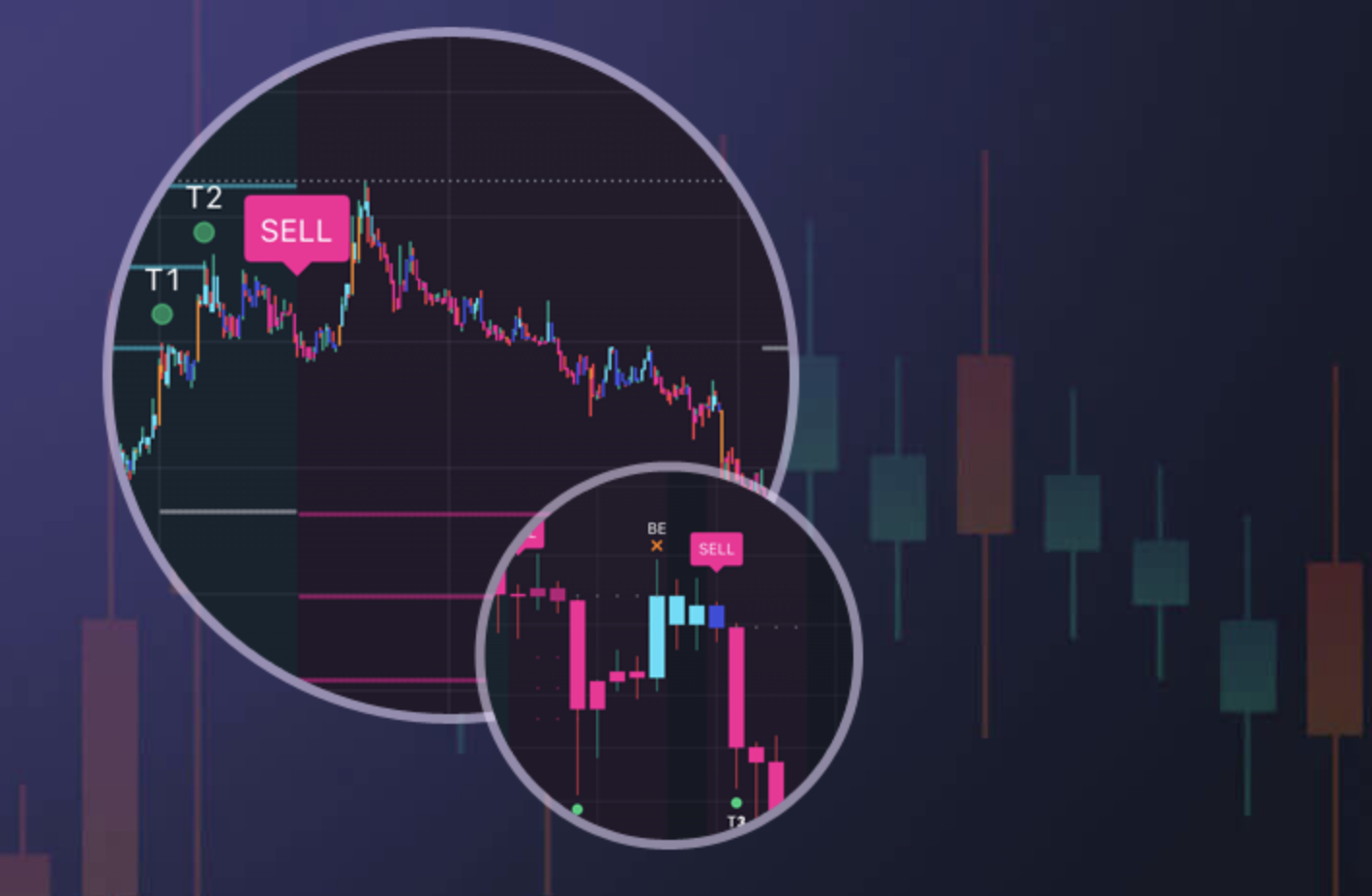
Mean Reversion
Market Making
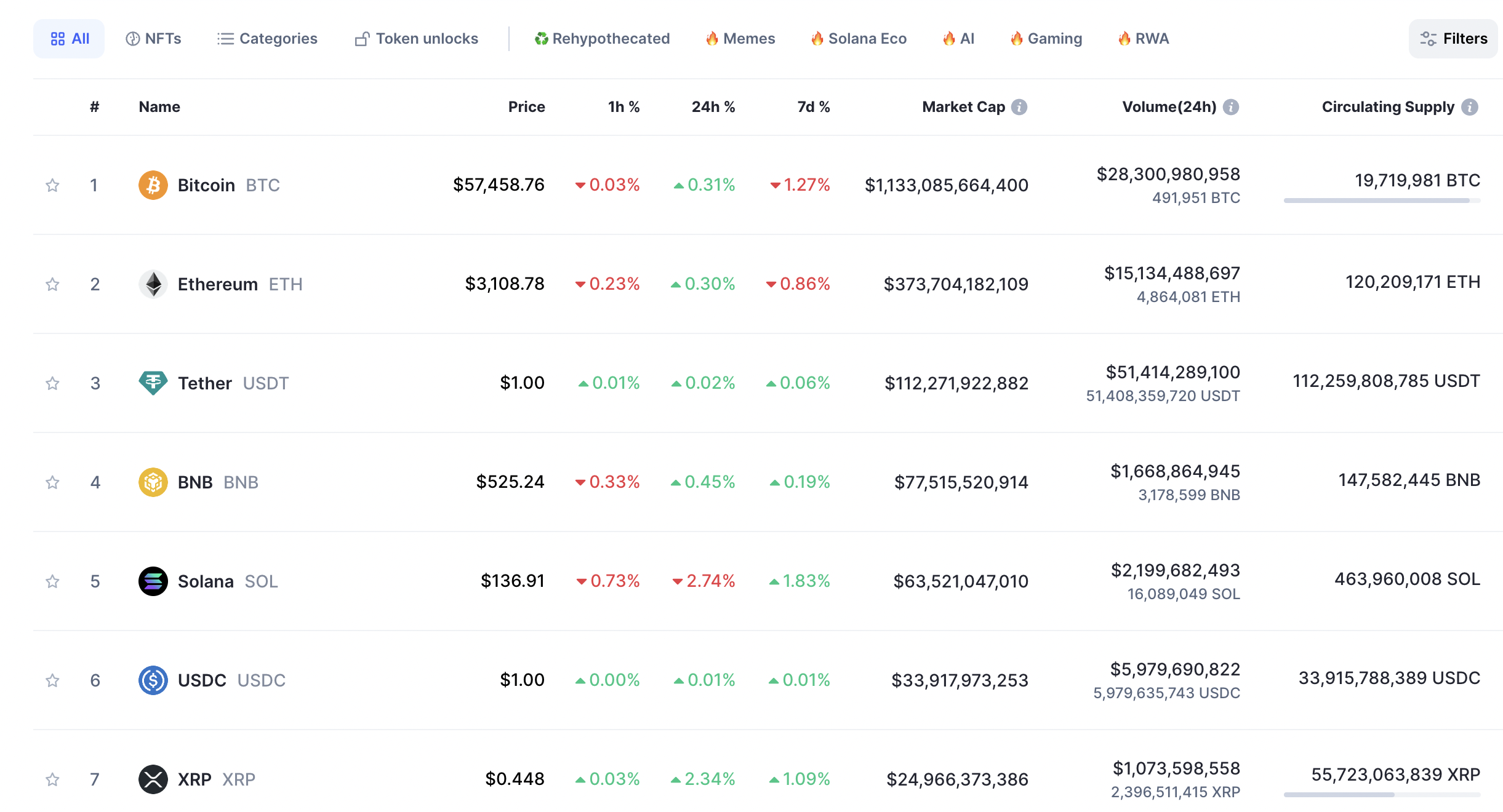
High-Frequency Trading
Sentiment Analysis
Advantages of Crypto Futures Algorithmic Trading
Rules-based Decision Making
Trade Around the Clock
Improved Speed
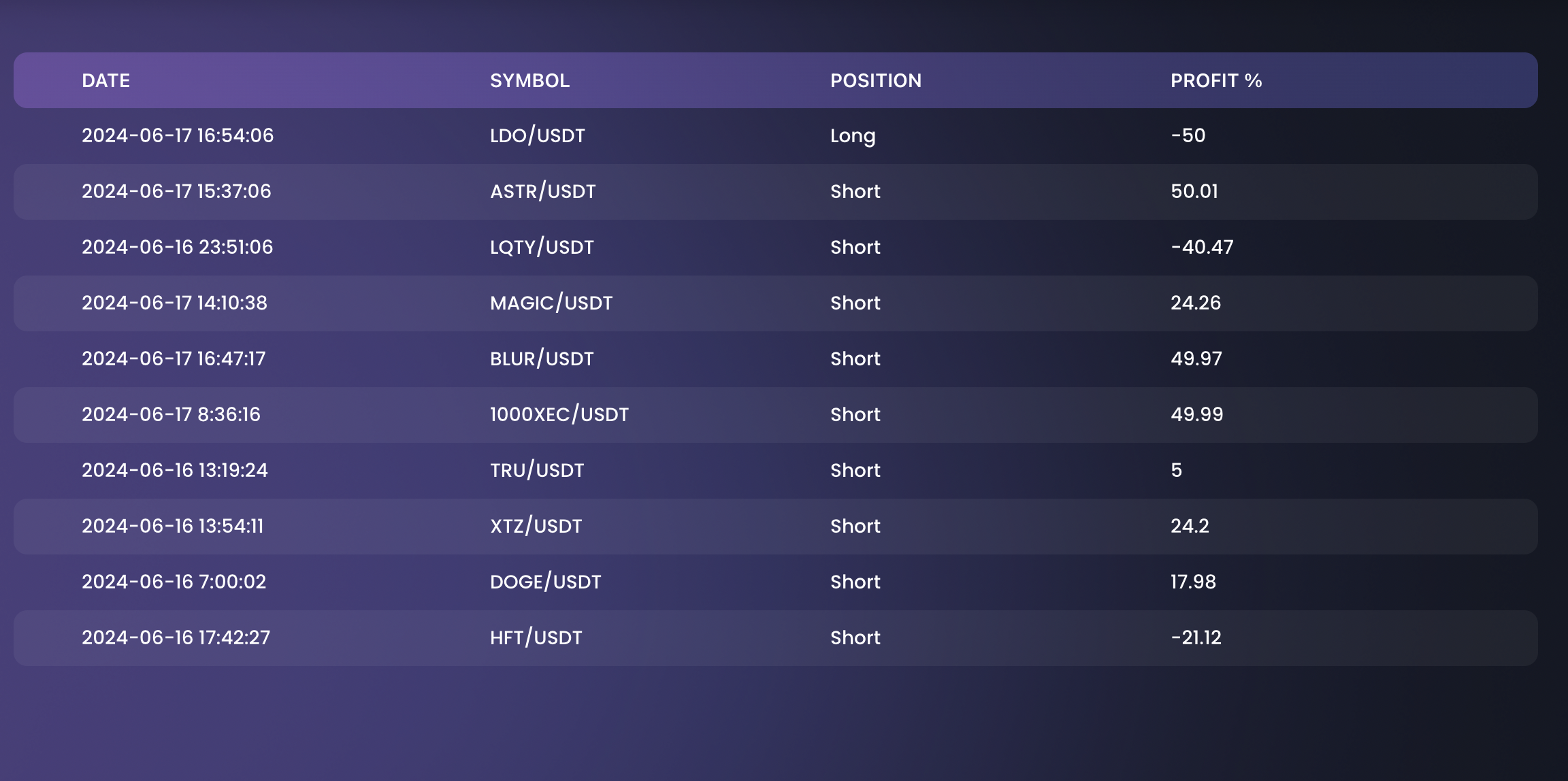
Strategy Diversification
Integrated Risk Management
Potential Pitfalls of Trading Algorithms
Navigating Market Disruptions
Mechanical Failures
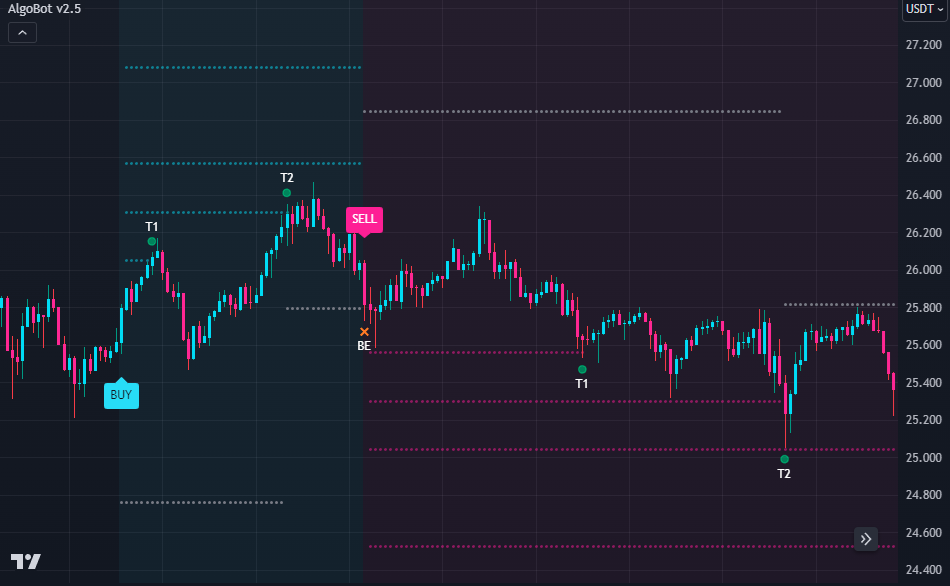
Overfitting to Historical Data
Choosing the Right Crypto Futures Trading Algorithms
Type of Algorithmic Software
Performance and Backtesting Results
Connectivity With Brokers
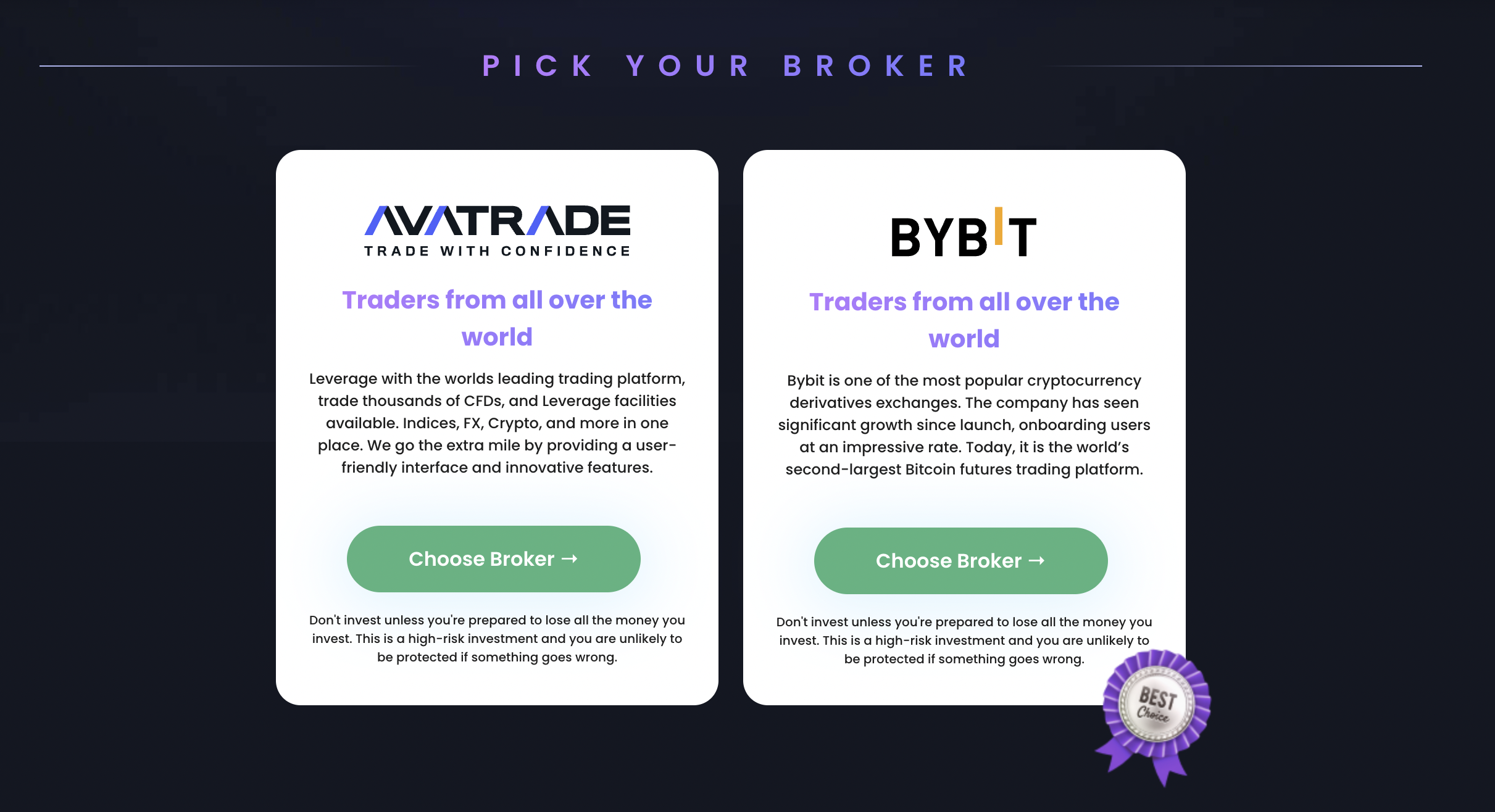
Customization and Flexibility
Demo Testing
Avoid Potential Scams
How to Get Started With Crypto Futures Algorithmic Trading
Step 1: Choose an Algorithmic Software for Trading
Step 2: Open Accounts on Crypto Exchanges
Step 3: Connect Exchanges to the Bot
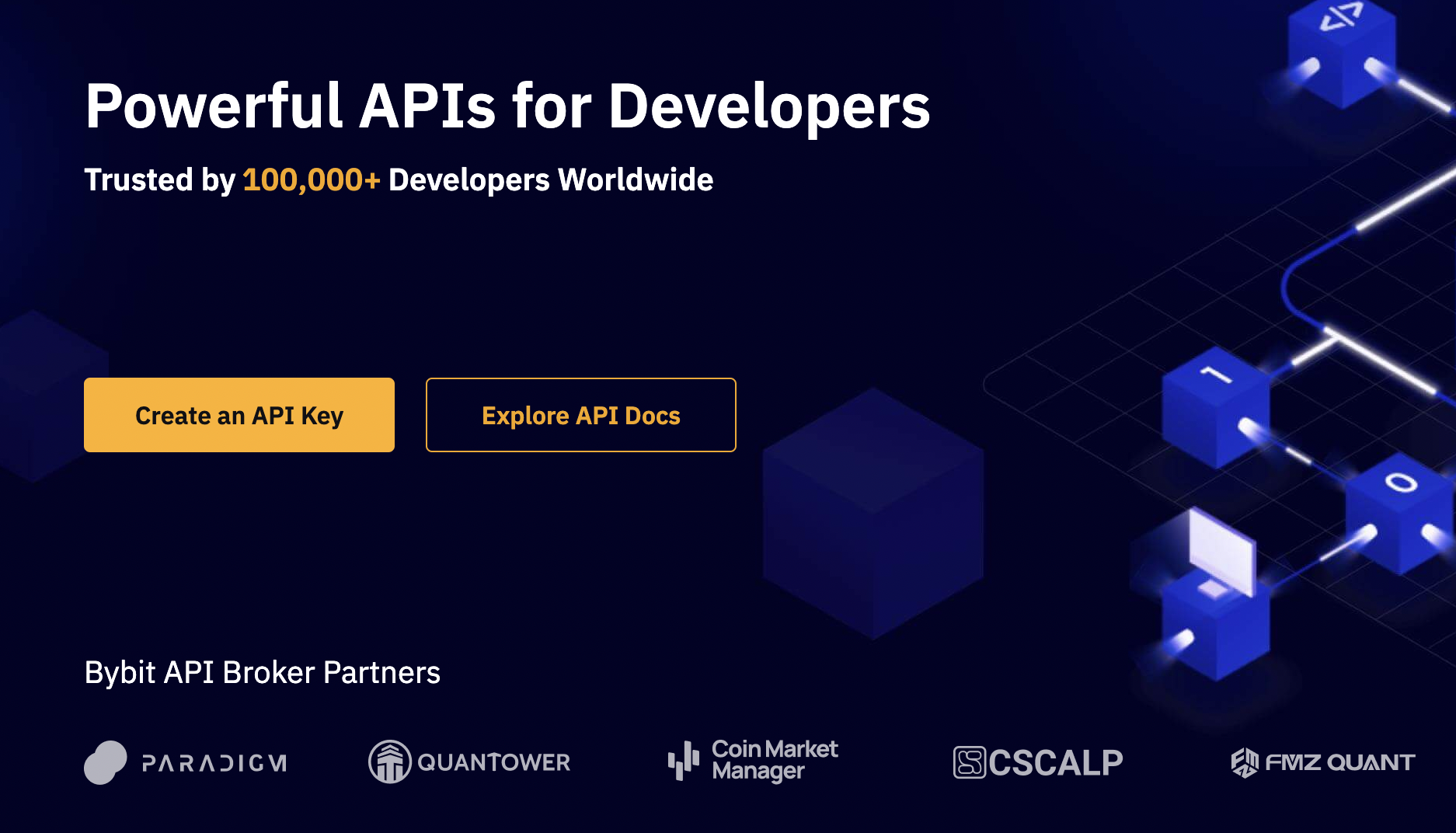
Step 4: Configure Trading Parameters
Step 5: Test the Software in Demo Mode
Step 6: Launch in the Live Crypto Futures Market
Best Crypto Futures Algorithmic Trading Bot
Conclusion
FAQs
What is algorithmic trading?
Is crypto futures algorithmic trading legal?
Can you make money with crypto futures algorithmic trading?
What are the drawbacks of algorithmic trading?


